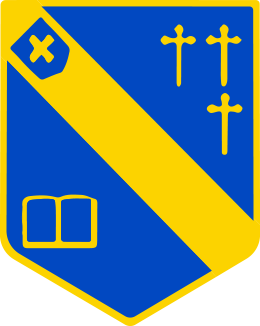
Duke of Norfolk CofE Primary School
Vocabulary Map
|
|
|
Foundation |
Phase 1 |
Phase 2 |
Phase 3 |
||||||
|
|
|
EYFS |
1 |
2 |
3 |
4 |
5 |
6 |
|||
|
COMPUTER SCIENCE |
|
1a. How can we make things work? |
1b. How can sequences of commands make things happen? |
1c. How do we create a simple game using code? |
1d. How do we use more complex procedures to control or simulate physical systems (e.g., controlling multiple systems on a fairground ride)? |
||||||
|
device control equipment button(s) click press
|
instructions code pattern software program algorithm sequence forward backward quarter turn hardware |
programme programmable debug precise outcome input output flowchart repeat loop procedure command |
physical system refine procedures explore procedures simulate/simulation conditional command variable(s) predict sensors error(s) logic(al) random
|
||||||||
|
|
|
2a. What is the internet? |
2b. How can we use the internet to safely find information to help us learn? |
2c. How do we know if information we find online can be trusted? |
2d. Can we publish web content/blogs whilst carefully considering the information we share? |
||||||
|
internet information website shortcut supervision
|
online search engine rules password(s) private uncomfortable ownership true false virus
|
advertisement(s) network internal external data transfer search results pop-ups in-app purchase trust opinion(s) fact(s) credit source(s) copy and paste |
SMS/ 4G storage ranking accurate legal reliable validity evidence privacy settings copyright plagiarism respect responsibility strong password(s)
|
||||||||
|
|
|
Foundation |
Phase 1 |
Phase 2 |
Phase 3 |
||||||
|
|
|
EYFS |
1 |
2 |
3 |
4 |
5 |
6 |
|||
|
DIGITAL LITERACY |
|
3a. How can we communicate with each other? |
3b. How can we share our school’s online safety rules to others? |
3c. How can technology impact our health and well-being? |
3d. How could we create a resource or strategy to help other children limit the negative effects of technology? |
||||||
|
communicate talk write telephone |
online safety rules responsibility technology balance appropriate trusted adult private information
|
identity self-image online/real-world portrayed relationships contact safe/unsafe known/unknown cyberbullying impact consequence(s) wellbeing
|
influence identify grooming control manipulate judgement(s) online profile/footprint reputation relevant appropriate privacy social media online technologies |
||||||||
|
INFORMATION TECHNOLOGY |
|
4a. How can you add your name to a digital picture? |
4b. How do we combine text or sound with images to present a story? |
4c. How can we create a multimedia project to present our learning in a topic? |
4d. How can we use a more sophisticated range of tools and techniques to create a non-linear, multimedia presentation to tell new parents about our school? |
||||||
|
word(s) image(s) key(s) spacebar mouse click
|
combine text graphics communicate audience publish presentation refine save retrieve file name
|
record present printable design multimedia layout appropriate tools edit cut paste font copyright free
|
structure non-linear integrate source(s) purpose media(um) content hyperlink(s) refine import format justify clarity reference/credit
|
||||||||
|
|
|
Foundation |
Phase 1 |
Phase 2 |
Phase 3 |
||||||
|
|
|
EYFS |
1 |
2 |
3 |
4 |
5 |
6 |
|||
|
INFORMATION TECHNOLOGY |
|
5a. How do we create a picture using technology? |
5b. How can you retrieve and change your photographs? |
5c. How can we create a film or animation for a specific purpose (e.g., a persuasive advert linked to a topic)? |
5d. How can we combine photos, videos, sounds, text, and voice-over to create a TV programme linked to our learning in another subject? |
||||||
|
app online picture tools colour brush line shape select
|
save retrieve paste copy insert still image capture video select edit modify
|
select manipulate combine frame edit mood enhance colourise animate persuade privacy |
evaluate CAD intention amend combine stop motion computer generated zooming panning wide shot titles credits sound effects
|
||||||||
|
INFORMATION TECHNOLOGY |
|
6a. How can we use technology to capture sounds? |
6b. How do we enhance our digital work by adding sound? |
6c. How can we digitally compose music or sound effects to accompany our work (e.g., poems, drama, dance etc.)? |
6d. How can we add a variety of music/sound to add atmosphere to our work, considering our audience and purpose? |
||||||
|
music sound voice record microphone |
electronic music talking tins recording music apps create compose playback
|
sound files upload dictaphone record voice recorder sound effect sound editing tools amend manipulate
|
broadcast podcast trimming soundtrack sound effect compose sound file formats (.wav/.mp3) audio genre style
|
|||||||
|
|
Foundation |
Phase 1 |
Phase 2 |
Phase 3 |
|||||||
|
|
|
EYFS |
1 |
2 |
3 |
4 |
5 |
6 |
|||
|
|
|
7a. How can we use technology to sort information? |
7b. How can we present data though pictograms using technology? |
6c. How can we use spreadsheets and databases to help us manage and compute larger amounts of information? |
7d. How can we use a range of searches, sorting, filtering, and graphing in spreadsheets/databases to interpret data we have collected? |
||||||
|
INORMATION TECHNOLOGY |
|
objects sort information same different
|
software labels information pictogram collect questions
|
organise tally chart database (pre-defined) enquiry collect spreadsheet automate calculate accuracy formulae data logger
|
search fields sort and/or/</>, not/”” model frequency table bar graph line graph investigate interpret analyse generate plausible hypothesis accuracy sensitive data |
||||||